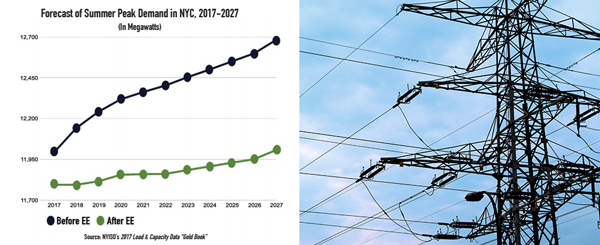Trending
Let there be light: Building Congress says NYC needs to invest in meeting rising energy demands
New report says city needs more transmission capacity

To keep up with the building boom and a population that is expected to soar to 8.7 million by 2025, New York City needs to find ways to pump more electricity to the five boroughs, according to a new report by the New York Building Congress.
The report asserts that the city needs to increase its transmission and natural gas pipeline capacity to meet energy demands projected through 2027. The need is exacerbated by the impending closure of two nuclear power plants in Indian Point by 2021, which provide 2,069 megawatts of electricity for Westchester County and New York City (or, 25 percent of the region’s energy). There are no plans for new generation facilities in the city, and proposals for two transmission projects are still in the planning phases.
“It was not that long ago when every heat wave brought with it the threat of a major power outage,” Carlo Scissura, president of the Building Congress, said in a prepared statement. “This is no time for complacency, however. All stakeholders – government, utilities, and commercial and residential consumers – must do their part if New York City is to remain the most reliable city in the United States when it comes to keeping the lights on.”
The Building Congress has estimated that 11.6 million square feet of office space will be constructed in Manhattan between 2016 and 2018. The group has also forecasted that 27,000 residential units will be added to the city in 2017 and another 25,000 in 2018. Though annual energy consumption in the city is expected to decline over the next eight years, the energy demand is projected to increase during the summer peak months (by 1,798 megawatts).
The report also notes the need to change regulations surrounding new energy-saving technologies, like solar power and cogeneration. For the latter, standby tariffs — fees paid to utilities to remain connected to the electricity distribution system — stand in the way of some developers investing in cogeneration, which can provide both heating and electricity to a building. The Durst Organization has a 4.6-megawatt cogeneration plant at One Bryant Park and has been working with the Real Estate Board of New York to push for changes to how these fees are applied.
The Building Congress also recommends that the city and state create “adequate incentives” for large corporate and building owners to try out energy-saving technologies. The extra upfront costs associated with these technologies — like passive house and solar or wind power — is often cited as a major deterrent for developers.




